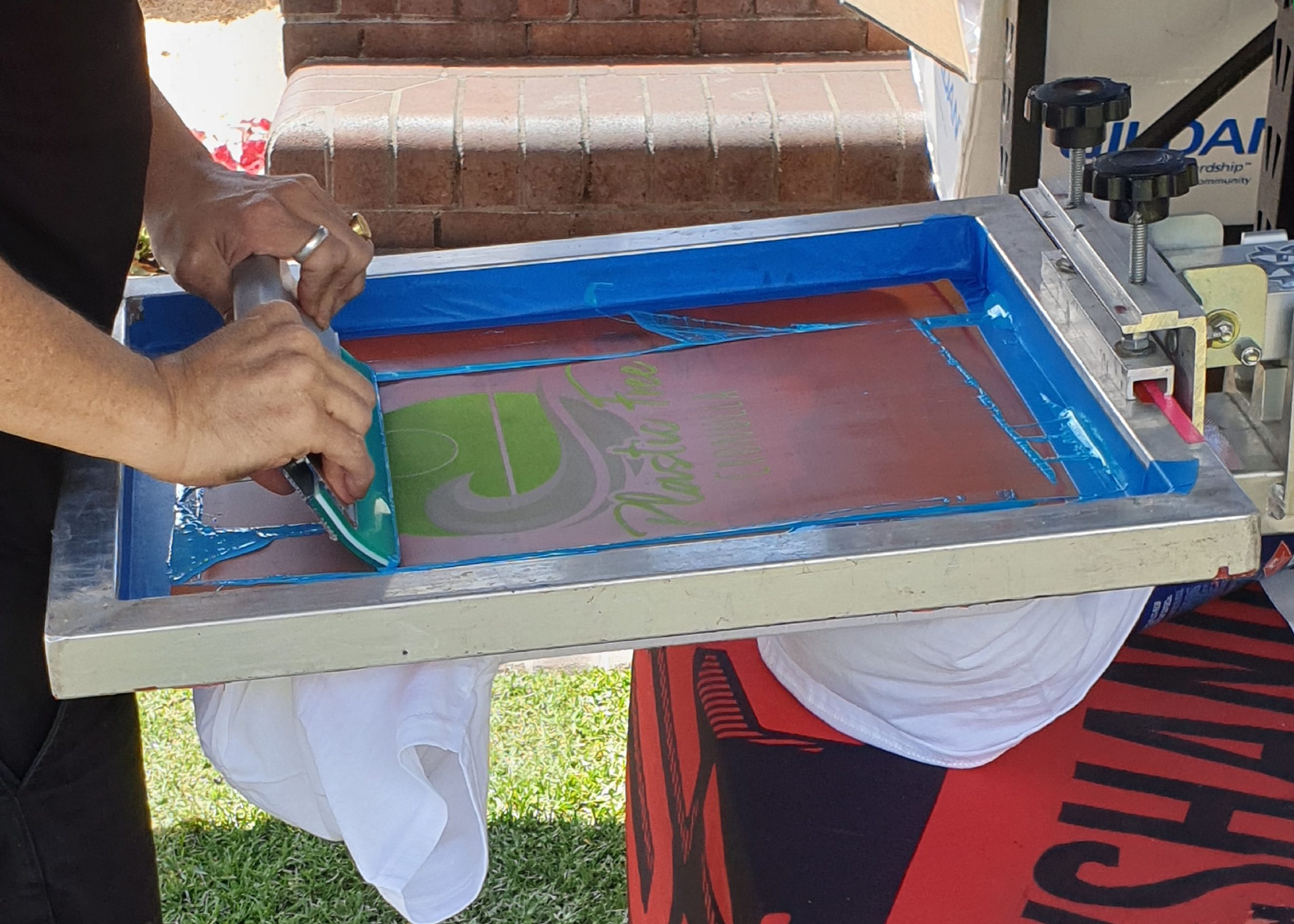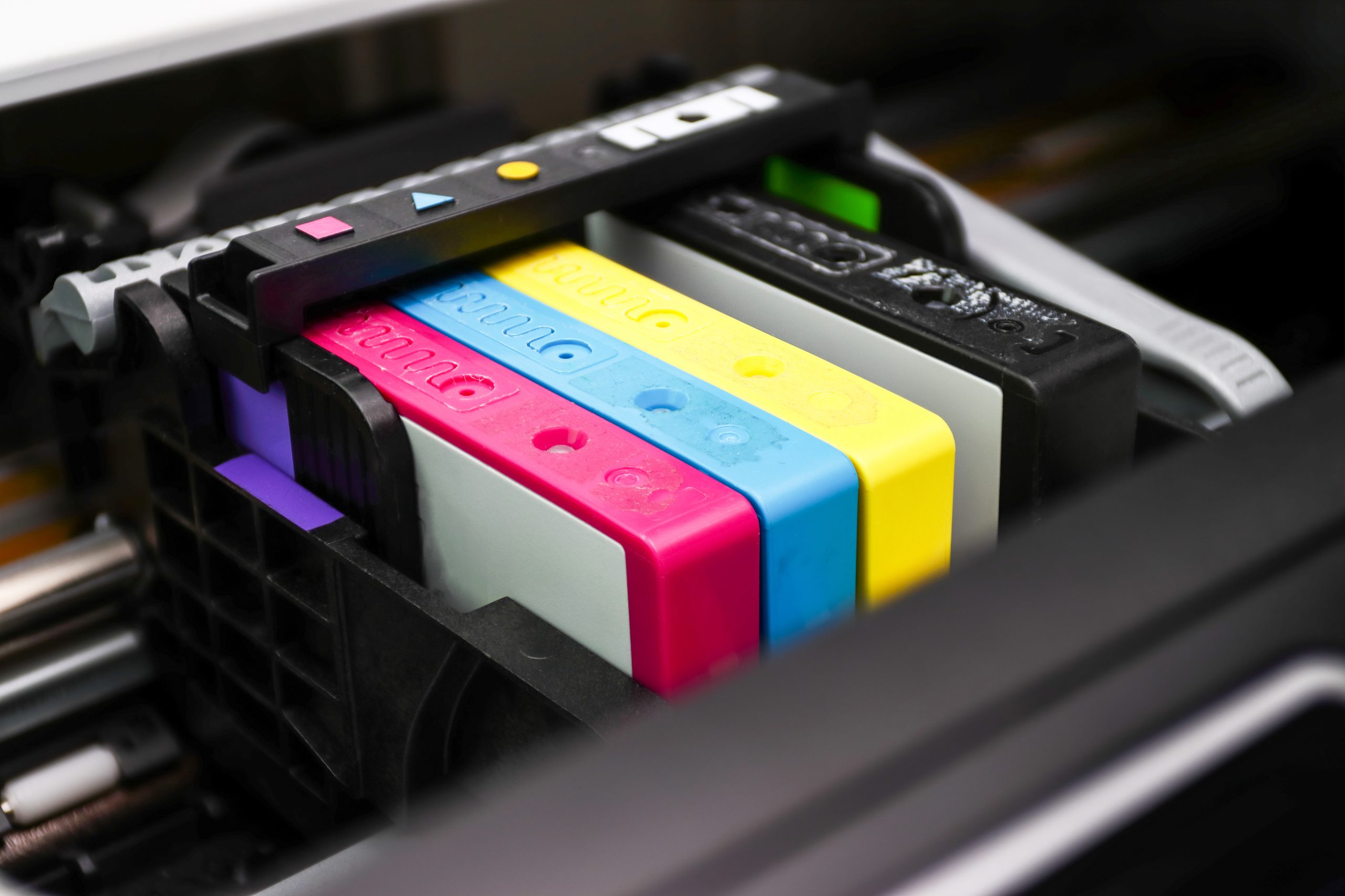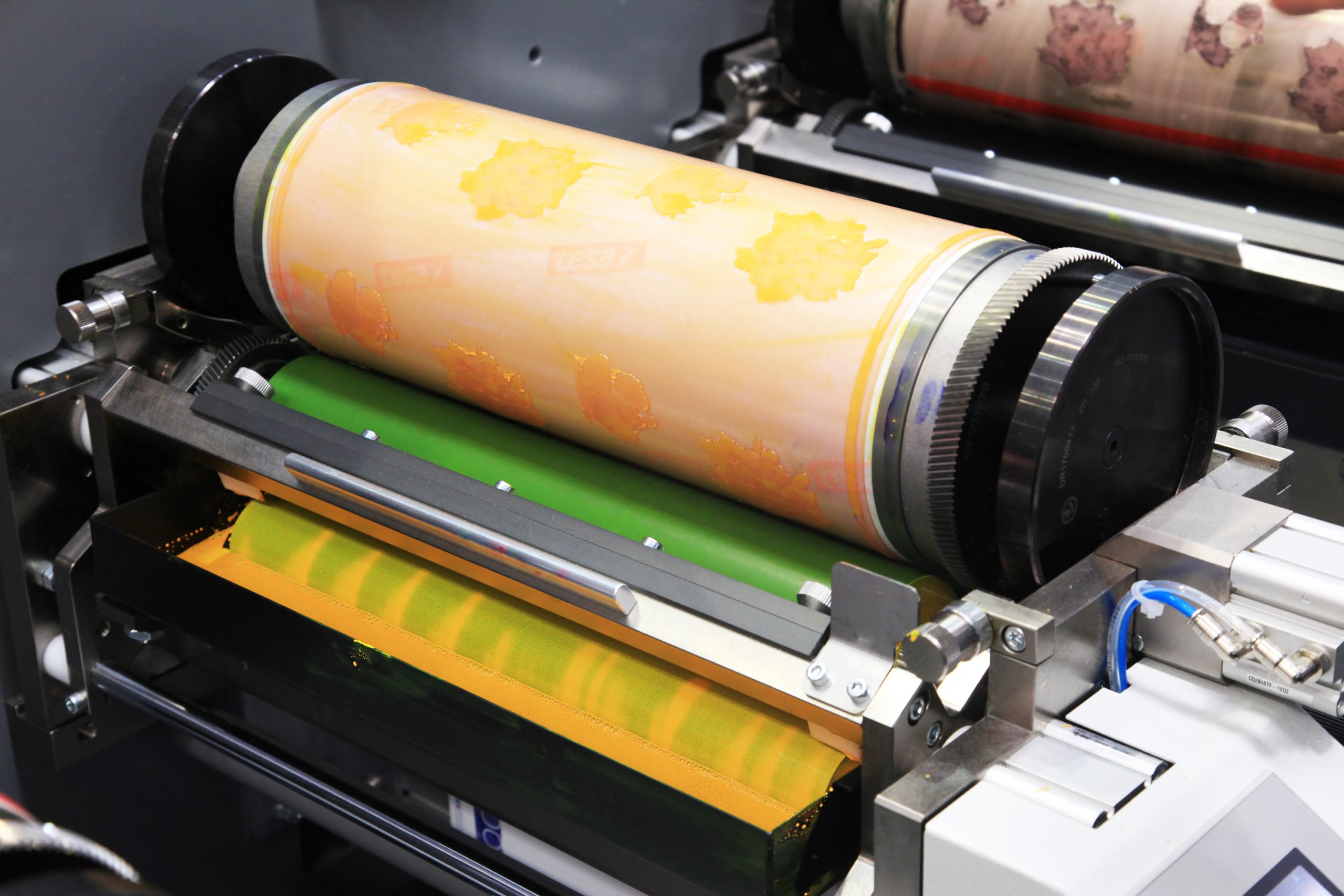In the sprawling urban landscape of Los Angeles, business cards are more than just small pieces of paper that carry contact information. They are a representation of personality, brand identity, and even an art form in their own right. In the City of Angels, where networking and branding are paramount for success, business card printing in Los Angeles is a thriving industry that intertwines technology, design, and the essential need for human connection in the business world. In today’s digital age, where everything is just a click away, it may seem that physical objects like business cards are becoming obsolete. However, despite the digital revolution, business cards remain relevant today, as they offer a personal touch that digital mediums just can’t replicate. Business cards are more than just a piece of paper with a name and contact information on it. They help break the ice and provide an opportunity to start a conversation. They can serve as an excellent conversation starter, and you never know where a simple exchange of business cards can lead. In fact, business cards have been around for centuries and have proven to be an effective way to network and build relationships. In addition to facilitating communication and networking, business cards also help in following up after an initial meeting. They provide a reference point for the conversation, making it easier to remember the details of the discussion and follow up with a relevant message. Most importantly, a business card is a direct reflection of an individual’s or a business’s brand. It communicates your identity, values, and what sets you apart from others. In a crowded and competitive market like Los Angeles, it is essential to have a unique and memorable brand identity that stands out from the rest. A well-designed business card can help achieve this goal, leaving a lasting impression on potential clients and customers. In summary, business cards are more than just a piece of paper with contact information. They offer a personal touch, facilitate communication and networking, help in following up, and most importantly, serve as a direct reflection of an individual’s or a business’s brand. Despite the digital revolution, business cards remain relevant and play a crucial role in building relationships, especially in an image-conscious market like Los Angeles. i. Customization and Personalization: Businesses and individuals are increasingly seeking bespoke designs, unique materials, and customization options, wanting their business cards to make bold statements. Printers are offering more choices in card stock, finishes, and design services, allowing for high degrees of personalization. ii. Technological Advancements: The industry continually evolves with digital technology, with state-of-the-art printing techniques like 3D embossing, UV spot finishing, and foil stamping, adding sophistication and diversity to card designs. These technologies enhance visual appeal and tactile experience, helping clients make a memorable impact. iii. Eco-conscious Printing: With growing environmental awareness, there’s a surging demand for sustainable practices within the printing industry. Many Los Angeles printers are embracing this change, offering options like recycled paper, soy-based inks, and processes that reduce water use and waste, appealing to eco-conscious consumers. The process of creating business cards in Los Angeles involves several stages, each crucial in ensuring the final product aligns with a client’s vision and objectives. Here’s what the journey typically entails: i. conceptualization: In the conceptualization phase, the primary aim is to gain a clear understanding of the client’s brand, the industry they operate in, and the message that they aim to convey through their business card. It is a crucial phase that sets the foundation for the entire design process. The initial conversations with the client help the designer to gather all the relevant information required to design a business card that accurately reflects the client’s brand image. During this phase, the design elements are carefully considered, including the color schemes that best represent the client’s brand, the typography that is most appropriate for the message, and the logos that need to be included in the design. The designer needs to have a clear understanding of the client’s brand identity, their target audience, and the industry norms to create a unique and impactful business card design. Overall, the conceptualization phase is a crucial step that sets the tone for the entire design process. It not only helps the designer to understand the client’s requirements but also enables them to create a design that accurately represents the brand and sets it apart from competitors. ii. Design Drafting and Approval: Designers then bring the concept to life, often providing multiple drafts. Clients review these, offer feedback, and eventually approve a final design. This collaboration ensures the finished product aligns with their expectations and business identity. iii. Printing and Production: Once a design is approved, high-quality printing begins. This stage might include several rounds of proofing, where clients can check and approve a printed sample before the full order is produced, ensuring accuracy and satisfaction. iv. Finishing Touches: After printing, cards may go through additional finishing processes like coating, cutting, and embossing. These final touches can significantly enhance a card’s look and feel, making it stand out. However, these challenges bring opportunities. The need for unique, tangible marketing tools is driving innovations in design and technology in printing. Additionally, the industry can capitalize on the trend of premiumization, where high-value, distinctive products are in demand. By offering memorable, quality business cards that digital platforms cannot replicate, printing businesses can thrive in this dynamic landscape. To read more, visit: www.losangelesprinting.net Digital printing is becoming increasingly popular as a method for creating high-quality prints in a short amount of time. With advances in digital technology, it’s easy to see how this process could become even more efficient and cost-effective in the future. Let’s take a look at how digital printing is shaping the future of printing technology. Digital printing offers many advantages over traditional methods. For starters, it’s much faster, allowing for faster turnaround times on projects. It also uses less energy than traditional methods, making it a more environmentally friendly option. Plus, digital printing can produce high-resolution images with vibrant colors that don’t fade over time like some traditional prints may. Finally, digital printing can be applied to almost any material, from paper to metal to fabric and more. This makes it an ideal choice for projects that require special materials or processes. Advances in technology are making digital printing even better. For example, 3D printers are now being used to create intricate designs with multiple layers and textures that would be impossible with traditional methods. Augmented reality (AR) apps are also being used to visualize how printed products will look before they’re created, giving businesses an unprecedented level of control over their projects. Additionally, AI algorithms are being developed that can detect errors in design files before they’re printed, reducing waste and rework costs associated with manual proofing. Digital printing has already revolutionized the way businesses create printed products—and it’s only going to get better as technology continues to advance. From 3D printers to AR apps and AI algorithms, there are a variety of ways that digital printing can make the process easier and more cost-effective for businesses. As these technologies continue to evolve and become more widely adopted, we can expect to see even greater advancements in the world of digital printing in the near future! In today’s fast-paced business world, staying up-to-date with the latest trends is crucial for maintaining a competitive edge. Whether you’re a small business owner or a corporate executive, understanding the newest developments in business printing can help you streamline your operations, enhance your brand image, and improve your overall efficiency. In this article, we will explore the five latest trends in business printing and how they can benefit your organization. From eco-friendly printing solutions to personalized marketing materials, these trends are shaping the way businesses communicate and present themselves in the digital age. Digital printing technology has made significant advancements in recent years, revolutionizing the printing industry. These advancements have paved the way for businesses to produce customized products on demand and have majorly reduced the reliance on traditional printing methods. One of the key features of digital printing is its high-speed printing capability. This allows businesses to quickly and efficiently produce a large volume of prints in a short amount of time, increasing productivity and meeting tight deadlines. Additionally, variable data printing has become a game-changer in the industry. With this technology, businesses can personalize each print with individual customer names, addresses, or other specific details, enhancing the customer experience and fostering customer loyalty. Furthermore, digital printing has expanded the possibilities of printing on non-traditional materials. It is now possible to print on surfaces such as glass, metal, fabric, and even 3D objects, opening up new avenues for creating unique and eye-catching marketing materials and promotional products. The global digital printing market is projected to experience rapid growth as businesses recognize the potential of this technology. By leveraging digital printing capabilities, companies can provide higher quality products, better customer service, and cost-effective pricing. Overall, digital printing technology is transforming the printing industry, offering businesses the opportunity to stay ahead of the competition and meet the demands of a dynamic market. Laser cutting is rapidly emerging as a popular trend in the printing industry. This cutting-edge technology allows businesses to achieve precise and accurate cuts on any stock, from paper to cardboard and even wood. Laser cutting has revolutionized the process of creating intricate designs on holiday cards and invitations, providing a level of detail and precision that was previously unattainable. With laser cutting, businesses can achieve intricate and delicate designs on their printed materials. This technology uses a high-powered laser beam to precisely cut through the stock, resulting in sharp and clean edges. Whether it’s a complex pattern or a highly detailed image, laser cutting can bring these designs to life, adding a touch of sophistication and uniqueness to holiday cards and invitations. One of the key advantages of laser cutting is its ability to accurately cut through various materials, including thick cardstock and even fabric. By using a laser cutter, businesses can create intricate cut-outs, layered designs, and even three-dimensional elements on their printed materials. Moreover, laser cutting also allows for the application of gold or colored foils, which can add a luxurious and premium touch to the finished product. The laser can precisely score or engrave the surface, creating a perfect base for foiling. This technique adds depth and elegance to holiday cards and invitations, making them stand out and leaving a lasting impression on recipients. In today’s digital age, commercial printing companies are recognizing the importance of digital content and marketing materials to stay competitive and drive revenue growth. The ability to create and distribute digital content has become essential in reaching potential customers and capturing their attention. Digital content, such as e-books, whitepapers, infographics, and blogs, allows commercial printing companies to showcase their expertise and industry knowledge. By sharing valuable content, businesses can position themselves as thought leaders and gain the trust of potential customers. This helps attract and engage a targeted audience, increasing the likelihood of converting them into loyal customers. Content marketing is a strategy that revolves around creating and distributing valuable, relevant, and consistent content to attract and retain customers. By consistently providing useful and informative content, commercial printing companies can establish themselves as trusted advisors in the industry. This builds customer loyalty and increases the chances of repeat business and referrals. Furthermore, social media marketing plays a crucial role in the success of commercial printing companies. Social media platforms allow businesses to connect and interact with consumers on a personal level. By engaging with customers through social media, companies can gain insights into their preferences and needs, leading to more personalized marketing materials and better customer experiences. The printing industry is constantly evolving, and one of the latest trends is the use of special effects and finishings to enhance printed materials. Techniques such as varnish, foil, metallic finishes, laminate, and gloss are being employed to create eye-catching and unique effects that grab the attention of customers. Varnish is a popular technique that adds a smooth and glossy finish to printed products, giving them a polished and professional look. Foil is another technique that involves applying a metallic or holographic coating to specific areas of a design, adding a touch of luxury and elegance. Metallic finishes, on the other hand, use metallic ink to create a shimmering effect, perfect for adding a touch of sophistication to marketing materials. Laminate is commonly used to protect printed materials from wear and tear, as well as to add a glossy or matte finish. Gloss, on the other hand, enhances the colors and sharpness of printed designs, creating a vibrant and eye-catching result. In addition to these techniques, the use of shimmering and laser cutting technology has also gained popularity. Shimmering involves adding tiny holographic or metallic flakes to printing inks, creating a sparkling effect. Laser cutting, on the other hand, allows for intricate and precise cuts and patterns, resulting in unique and visually stunning designs. One notable tool in the printing industry that facilitates the creation of special effects is the Konica Minolta MGI JETvarnish 3D Evolution printer. This printer allows for the application of dimensional sensory textures, adding depth and tactility to printed products, making them stand out even more. By incorporating special effects and finishings into their printing operations, businesses can create high-quality and visually appealing marketing materials that capture the attention of their target audience, leaving a lasting impression. One of the latest trends in business printing is the rapidly growing use of 3D printing technology. 3D printing, or additive manufacturing, is revolutionizing the way products are created by building three-dimensional objects layer by layer using a digital design. One of the key advantages of 3D printing is its ability to create complex products with intricate designs and details that would be difficult or even impossible to produce using traditional manufacturing methods. This technology allows businesses to develop prototypes, models, and even final products with greater precision and accuracy. Moreover, 3D printing offers significant cost savings as it requires fewer materials compared to traditional methods. Manufacturers often produce parts with intricate internal structures that are hollow or have internal lattice designs, resulting in lighter weight components and reduced material waste. This not only lowers production costs but also contributes to a more sustainable and eco-friendly approach. The time efficiency of 3D printing is also noteworthy. Since objects are printed layer by layer, 3D printing eliminates the need for additional assembly steps, saving valuable time in the production process. Additionally, this technology allows for rapid prototyping and iterative design, enabling businesses to quickly test and improve their products before mass production. 3D printing is being implemented across various sectors. In the manufacturing industry, it is used for creating customized parts, tooling, and even entire products. In the advertising field, 3D printing is utilized to produce eye-catching promotional materials and prototypes. Furthermore, the medical industry has embraced 3D printing for applications such as custom prosthetics, dental implants, and even human tissue and organs. With its ability to create complex products, cost savings, time efficiency, and implementation in various sectors, it is no wonder that 3D printing is gaining momentum as a prominent trend in the business printing industry. In conclusion, keeping up with the latest trends in business printing is essential for any modern business. These trends are not only about aesthetics but also about efficiency, cost-effectiveness, and sustainability. By embracing these trends, businesses can enhance their brand image, improve their communication materials, and reduce their environmental impact. Screen printing is a popular method for creating durable and vibrant designs on various surfaces, from t-shirts to posters. However, not all inks are created equal, and using the wrong ink can result in disappointing results. That’s why it’s crucial to choose the right ink for your projects, and I’m here to help you make that decision. In this article, I’ll introduce you to the top 5 screen printing inks that have proven to deliver vibrant and long-lasting prints. Whether you’re a professional screen printer or a hobbyist, these inks will ensure that your designs stay bold and vibrant for years to come. Screen printing is a popular printing technique with powerful printing capabilities for creating vibrant and long-lasting prints on a wide range of materials. The type of ink used in the screen printing process plays a crucial role in the outcome and durability of the prints. There are several types of screen printing inks available, each with its own unique characteristics and applications. Water-based inks are a popular choice for screen printing due to their softer feel, vibrant prints, and eco-friendly composition. These inks use water as the primary solvent, making them a more environmentally friendly alternative to traditional plastisol inks. One of the main benefits of water-based inks is their soft-hand feel. When printed onto fabric, water-based inks penetrate the fibers, resulting in a print that is less noticeable to the touch. This is especially desirable for those seeking a more comfortable and natural feel. Additionally, water-based inks offer vibrant and eye-catching prints. The ink colors appear more vibrant and translucent, allowing for a wider range of colors and a better color result overall. This makes them ideal for intricate or detailed designs that require precise color accuracy. Furthermore, using water-based inks for screen printing is a greener choice as they have a lower environmental impact compared to traditional plastisol inks. Water is the primary solvent in these inks, reducing the need for harmful chemicals and decreasing air pollution. However, it is important to note that water-based inks do have some drawbacks. They typically have longer drying and curing times compared to plastisol inks, requiring additional time and care during the printing process. Additionally, they may not be as suitable for printing on dark-colored garments as the ink colors can appear less vibrant and may require multiple layers for an opaque result. Plastisol ink is another popular type of ink used in screen printing, offering its own unique set of characteristics and advantages. One standout feature of plastisol ink is its exceptional opacity, making it the ideal choice for printing on dark garments or fabrics. The ink colors are highly saturated, resulting in vibrant and eye-catching prints that really pop. Additionally, plastisol ink is known for its exceptional durability. Once cured, this ink creates a bond with the fabric, ensuring that the print withstands regular wear and tear without fading or cracking. This makes plastisol ink a great choice for garments that will be subjected to frequent washing or harsh conditions. Another advantage of plastisol ink is its ability to accurately reproduce high-detail designs. The ink is thick and holds fine details exceptionally well, allowing for intricate images or text to be printed with clarity and precision. This makes plastisol ink the go-to option for printing logos or detailed graphics. However, there are a few limitations to consider with plastisol ink. When used in large printed areas, the ink can feel heavier and more noticeable on the fabric compared to water-based inks. Additionally, plastisol ink requires heat curing to achieve proper adhesion and permanence, which adds an extra step to the printing process and may require specialized equipment. Discharge inks are a type of water-based ink commonly used in screen printing to achieve vibrant colors on dark garments. Unlike traditional plastisol ink, discharge inks work by removing the existing color on the fabric and then replacing it with a new color. This unique process allows for bold and vibrant prints on dark fabrics. Discharge inks are composed of a mixture of dyes or pigments, water, and a primary solvent. They also require the use of an activator, which is typically a separate chemical compound that initiates the color removal process. The activator works by breaking down the existing dye or pigment on the fabric, allowing for a clean canvas to apply the new color. The application process for discharge inks involves several steps. First, the ink is mixed with the activator and applied to the screen mesh. Then, the screen is pressed onto the fabric, and the activator starts to remove the existing color. The fabric is then heat cured to fix the new color onto the garment permanently. When using discharge inks, there are a few factors to consider. Firstly, high-quality emulsion is crucial to ensure proper ink transfer and color vibrancy. Additionally, the curing temperature must be carefully controlled to achieve optimal results. Discharge inks also have a limited pot life, meaning they should be used within a certain time frame to maintain their effectiveness. Solvent-based inks are a popular choice for screen printing due to their powerful printing capabilities and wide range of applications. These inks, as the name suggests, are composed of a primary solvent as the base, which provides excellent adhesion to a variety of materials, including synthetic fibers and fabric types that are typically challenging to print on. Compared to water-based inks, solvent-based inks offer several advantages. Firstly, they produce vibrant and long-lasting prints that retain their color saturation even after multiple washes. This makes them ideal for printing on dark garments or fabrics with high dye absorption. Additionally, solvent-based inks have a smoother workability, allowing for detailed designs and precise color application. Solvent-based inks offer versatility in terms of the range of materials they can be used on, including polyester, nylon, and other synthetic fabrics. They also adhere well to substrates like plastics and metals, making them suitable for printing on a wide variety of surfaces. Silicone ink is a type of screen printing ink that offers unique characteristics and advantages, making it a top choice for vibrant and long-lasting prints. With its powerful printing capabilities, silicone ink delivers high-quality prints that boast vibrant colors and exceptional durability. One of the notable advantages of silicone ink is its ability to adhere well to synthetic fabrics, making it perfect for printing on materials like polyester and nylon. This ink’s strong adhesion ensures that the prints remain vibrant and intact even after repeated washing and wear. In fact, silicone ink is renowned for its resistance to fading, ensuring that the prints maintain their original vibrancy over time. Additionally, silicone ink offers flexibility and durability, making it suitable for a wide range of applications. It can easily accommodate detailed designs and intricate patterns, allowing for precise color application and outstanding print quality. Furthermore, its flexibility ensures that the prints retain their softness and do not crack or peel, even on stretchable fabrics. For screen printers seeking vibrant and long-lasting prints on synthetic fabrics, silicone ink is an excellent choice. Its high-quality results, vibrant colors, durability, and resistance to fading make it a top contender in the world of screen printing inks. In conclusion, choosing the right screen printing ink is crucial for achieving vibrant and long-lasting prints. The top 5 inks discussed in this article, including plastisol, water-based, discharge, silicone, and hybrid inks, each have their own unique advantages and applications. Whether you prioritize durability, eco-friendliness, or versatility, there is an ink option that will meet your specific needs. At its core, screen printing involves using a mesh screen, ink, and a squeegee to transfer the desired image onto a surface. But what sets screen printing apart is the level of detail and precision that can be achieved. Whether you’re a beginner looking to learn the basics or an experienced artist wanting to refine your skills, understanding the screen printing process is essential for creating stunning prints. In this article, we will take a closer look at each step of the screen printing process, from preparing the screen and creating the stencil to applying the ink and curing the final print. By the end, you’ll have a comprehensive understanding of how screen printing works and be ready to embark on your own creative journey. Screen printing is a popular technique used in various industries, such as printing art prints or creating designs on textiles. It involves the use of a mesh screen, a stencil, and ink to transfer a design onto a desired surface. This step-by-step guide will walk you through the screen printing process, from creating a design to applying the ink onto the material. By following these simple steps, you will be able to achieve detailed and professional-looking prints with ease. The first step in screen printing is to prepare the design that will be printed onto the desired material. One way to do this is by transferring the image onto a printing board. A transparent acetate film is commonly used for this purpose. To create a screen or stencil, the image on the acetate film is transferred onto a mesh screen. The screen is usually made of a fine mesh material, such as polyester, with a specific mesh count. This mesh allows the ink to pass through onto the material being printed. Transferring the image onto the printing board requires the use of the popular photo emulsion stencil method. This method allows for intricate and detailed designs to be transferred onto the mesh screen. To begin, coat the mesh screen with a light-reactive emulsion. This can be done by pouring the emulsion onto the screen and using a squeegee to spread it evenly. Make sure the entire screen is covered with a thin layer of the emulsion. Next, place a transparent acetate film with the original image onto the coated mesh screen. Align the image with the desired position and press it firmly onto the emulsion. Now, expose the screen to a bright light source for a specific exposure time. The light will cause the emulsion to harden, except for the areas covered by the image on the acetate film. This creates a stencil on the screen. After the exposure time, carefully remove the acetate film from the screen. You will notice that the hardened emulsion on the screen has created a clear and defined area where the image was located. To prepare the mesh screen for screen printing, the first step is to apply a light-reactive emulsion. This process allows for the creation of a stencil on the screen, which will determine the design that gets printed onto the material. To apply the emulsion, the screen should be coated on both sides. Start by pouring the light-reactive emulsion onto the screen. Use a squeegee to spread the emulsion evenly across the entire surface of the screen. It is important to ensure that the emulsion is spread thin and evenly, as this will contribute to the quality of the final print. After the emulsion has been spread, allow the screen to dry for about 10 to 20 minutes. This drying time will enable the emulsion to solidify and adhere to the screen properly. The light-reactive emulsion acts as a barrier that protects the areas of the screen where the ink should not pass through. Only the areas where the emulsion has been removed will allow the ink to pass through and create the desired design. This is why it is crucial to apply the emulsion correctly and evenly. Exposing the mesh screen is a crucial step in the screen printing process as it determines the accuracy and quality of the final print. This involves using bright light and transparent acetate film to transfer the desired image onto the screen. To begin, place the transparent acetate film with the desired design on top of the mesh screen. Make sure to align the stencil accurately with the screen to ensure a precise print. This step is crucial for achieving a clean and detailed design. Next, it’s time to expose the image onto the screen. Turn on the light source, typically a bright light or UV light, and position it above the screen. Leave the light on for around 15 to 20 minutes. During this time, the light reacts with the light-reactive emulsion on the screen to create a chemical reaction. The bright light passes through the transparent areas of the acetate film and hardens the emulsion beneath, creating a stencil that will allow ink to pass through during the printing stage. Meanwhile, the areas covered by the opaque parts of the film will remain soft and wash away later. After the exposure time is complete, carefully remove the transparent acetate film from the screen. Check if the image has been successfully transferred onto the screen by inspecting the stencil. If the exposure was done properly, the design should be clearly visible, ensuring a clean and accurate print. Exposing the mesh screen with bright light and transparent acetate film is a critical step in the screen printing process. It allows for the creation of detailed designs and ensures accurate printing results. After the exposure process, it’s time to wash out the original image from the mesh screen. This step is crucial to reveal the stencil that will allow ink to pass through during the printing stage. To wash out the original image, start by wetting the screen with water. Use a handheld shower head, sink sprayer, or pressure washer on a low setting to gently rinse the screen. This will help loosen the light-sensitive emulsion in the areas of the design that were exposed to light. Continue rinsing the screen until you start to see the image appearing clearly. It’s important to be patient and avoid rushing this step as excessive force can damage the stencil. Once the original image is fully washed out, thoroughly inspect the screen to ensure all areas have been cleaned properly. Check for any missed spots or areas where the design might have not fully washed away. If you notice any gaps or imperfections in the stencil, carefully cover them with masking tape to prevent any ink from seeping through during the printing process. This will help maintain the integrity of the design and ensure a clean print. Mixing water-based inks for silk screen printing involves a careful process to ensure accurate colors and smooth printing results. Here’s a step-by-step guide on how to properly prepare and mix water-based inks for your screen printing projects: 1. Gather your materials: Start by gathering all the necessary supplies, including water-based inks, mixing containers, a palette knife or spatula for stirring, and a scale or measuring tools for accurate measurements. 2. Prepare the inks: Place each color of ink in its own clean container. Label each container with the name of the color to avoid confusion during the printing process. 3. Measure the ink: To achieve accurate colors, measure out the desired amount of ink for each color. Use a scale or measuring tools according to the manufacturer’s recommended ratios or your desired color intensity. 4. Strain the ink: Before pouring the ink into the screen, strain it through a fine-mesh fabric or nylon stocking to remove any impurities or clumps that may affect the print quality. This step ensures smooth ink flow and prevents clogging. 5. Adjust ink consistency: Water-based inks can have different viscosities, so it’s important to adjust their consistency for optimal printing. Add small amounts of water or a professional ink reducer according to the manufacturer’s instructions until you achieve the desired viscosity. This step ensures smooth and even ink coverage on the fabric or paper. To load ink into a squeegee and apply it to a flat surface, follow these step-by-step instructions. 1. Prepare the ink: Begin by preparing the ink you will be using. Make sure to label each container with the correct color name to avoid confusion later on. Choose the appropriate type of ink for your project, whether it be water-based or another type that suits your needs. 2. Measure the ink: Accurate measurements are crucial for achieving the desired color and consistency. Measure out the required amount of ink for each color, following the recommended ratios provided by the manufacturer or based on your desired color intensity. Use a scale or measuring tools for precise measurements. 3. Strain the ink: To ensure a smooth printing process and prevent any impurities or clumps from affecting the print quality, strain the ink through a fine-mesh fabric or nylon stocking. This step guarantees a clean and consistent ink flow, reducing the risk of clogging. 4. Adjust ink consistency: Different inks can have varying viscosities, affecting their ability to spread evenly on the surface. Add small amounts of water or a professional ink reducer according to the manufacturer’s instructions to achieve the desired consistency. Adjusting the ink’s viscosity will provide smooth and even coverage during the printing process. 5. Load ink onto the squeegee: Use a palette knife or spatula to scoop the desired amount of ink onto the squeegee blade. Spread the ink evenly along the length of the blade, ensuring it covers the entire width. The loaded squeegee is now ready for application. 6. Apply ink to the flat surface: Position the screen with the prepared stencil or design over the flat surface you wish to print on. With the loaded squeegee in hand, hold it at a 45-degree angle and apply firm, even pressure as you drag the ink across the screen. Make sure to cover the entire design area with a smooth and consistent pass of the squeegee. To remove excess ink from the printed area in screen printing, a separate screen and mesh count are used. Here is a step-by-step guide on how to remove excess ink effectively: 1. Lay the separate screen: Once you have finished applying the ink to the flat surface using the squeegee, place a separate screen, often made of transparent acetate film, on top of the printed area. Ensure that the screen covers the entire design. 2. Gently run the squeegee: With the separate screen in place, use the squeegee to run across the screen with light pressure. This step helps remove any excess ink from the design without smudging it. By using a bright light source, you can check if any traces of excess ink remain. 3. Clean the separate screen and mesh count: After removing the excess ink, carefully lift the separate screen and clean it. Rinse the screen with water or use a mild detergent to remove any remaining ink. It’s important to clean the screen thoroughly to avoid ink residue interfering with future prints. Similarly, clean the mesh count to ensure proper ink flow for subsequent prints. After the screen printing process is complete, the next step is curing or drying the finished product. This step is crucial as it ensures that the ink adheres properly to the fabric or substrate and allows the design to last longer. In screen printing, the printed design is heat-cured by passing it through a dryer. The heat helps to evaporate the solvents in the ink, allowing it to dry and bond with the fabric or substrate. The curing temperature and duration depend on the type of ink being used and the fabric or substrate. Typically, a higher temperature and longer drying time are required for water-based inks compared to plastisol inks. Before the finished product is considered complete, it is essential to check and wash it to remove any residue. This step involves carefully inspecting the print for any imperfections, such as smudges or inconsistencies in the ink coverage. Any residual ink should be removed to ensure a clean and professional-looking final product. To wash the printed item, it is typically soaked in warm water with a mild detergent. Gentle agitation helps loosen and remove any remaining ink or chemicals. Afterward, the item should be rinsed thoroughly to remove all detergent residue. Finally, it is air-dried or passed through a dryer at a lower temperature to remove any remaining moisture. Screen printing is a versatile and popular technique for customizing fabrics and creating one-of-a-kind designs. By using heat-curing techniques, the printed design bonds with the fabric or substrate, ensuring durability and longevity. Checking and washing the finished product is crucial to remove any imperfections and residue, resulting in a clean and professional-looking final product. As the demand for environmentally friendly products continues to grow, many companies are stepping up to offer eco-conscious options. These eco-friendly inks are made from renewable resources, such as vegetable oils or soybeans, and they are free from harmful chemicals and toxins. By using these inks, you can reduce your carbon footprint and contribute to a greener and more sustainable future. In this article, we will explore the top 5 eco-friendly inks currently available in the market. Whether you’re a business owner looking to make your printing practices more sustainable or an individual who wants to make a small but impactful change in your everyday life, this guide will help you choose the best eco-friendly ink option for your needs. UV-curable ink is a type of ink used in the printing industry that offers several benefits and characteristics that make it eco-friendly. One of the main advantages of UV-curable ink is its efficiency and the ability to use less ink compared to other wide format print technologies. UV printing is a process where the ink is instantly cured and dried with UV light exposure. This means that the ink does not require any time to dry, eliminating the need for print providers to use additional ink. This not only saves printing costs but also reduces the amount of wasted ink. Furthermore, the curing process of UV ink is energy-efficient, making it an environmentally friendly choice. UV inks are cured using UV LED lights, which consume less energy compared to traditional curing methods. The use of these energy-efficient curing systems contributes to the reduction of energy consumption and lowers carbon footprint. UV-curable ink also offers other characteristics that make it eco-friendly. It is free from harmful chemicals and substances, such as solvents and volatile organic compounds (VOCs), commonly found in solvent-based inks. This makes it a safer option for both the environment and the individuals working with the ink. Additionally, UV-curable ink is compatible with a wide range of substrates, including recycled materials, further promoting sustainable practices within the printing industry. Algae-based ink is a sustainable alternative to petroleum-based inks that are commonly used in the printing industry. This eco-friendly ink is derived from renewable algae cells, which are obtained as a waste product from algae biofuel operations. By utilizing these algae cells, this ink helps reduce the environmental footprint of the printing industry. One of the key advantages of algae-based ink is its availability for paper and corrugate-based products, making it suitable for a wide range of applications. This ink offers high-quality prints while minimizing the negative effects on the environment. Compared to petroleum-based inks, algae-based ink significantly reduces the carbon footprint and reliance on fossil fuels. It is made from organic and biodegradable materials, reducing the overall ecological footprint of the printing process. Algae-based ink also eliminates the use of harmful chemicals and solvents commonly found in traditional ink formulas. In addition to its eco-friendly characteristics, algae-based ink exhibits excellent performance in digital and commercial printing technologies. It offers vibrant colors and is compatible with various substrates, making it suitable for both packaging and flexible packaging industries. Overall, algae-based ink presents an innovative and sustainable solution for the printing industry. Its composition from renewable algae cells and reduced environmental impact make it an ideal choice for those seeking to reduce their carbon footprint and embrace environmentally friendly practices. Soy-based ink is a popular choice as an eco-friendly alternative to petroleum-based inks in the printing industry. Made from soybean oil, this type of ink offers several benefits and characteristics that make it a sustainable option. One of the key advantages of soy-based ink is its renewable nature. Soybeans are a renewable resource that can be replenished through sustainable farming practices, making it a more environmentally friendly choice compared to petroleum-based inks, which are derived from fossil fuels. In addition to being renewable, soy-based ink also has lower agricultural costs. Soybeans can be grown and harvested more efficiently compared to other crops used for ink production, reducing the overall environmental impact. Another important characteristic of soy-based ink is its biodegradability. Unlike petroleum-based inks, which can be harmful to the environment and take a long time to break down, soy-based ink is readily biodegradable, reducing its impact on landfills and ecosystems. Soy-based ink also offers excellent ink efficiency. It has a lower viscosity, allowing it to be used more effectively, resulting in reduced ink waste and lower production costs. Furthermore, soy-based ink is easier to remove during the recycling process. It has a lower affinity for paper fibers, making it easier to separate from the paper during recycling, which can contribute to the production of high-quality recycled paper. Overall, soy-based ink provides a sustainable and eco-friendly solution for the printing industry, with its renewable nature, low agricultural costs, biodegradability, ink efficiency, and ease of removal during recycling. Water-based ink is a popular choice for eco-conscious individuals and businesses looking for an alternative to traditional inks. This type of ink offers numerous benefits and features that make it a sustainable and environmentally friendly option. One of the key advantages of water-based ink is its composition primarily of natural and biodegradable materials. Unlike solvent-based inks that contain harmful chemicals, water-based inks are made from a combination of water, pigments, and binders derived from natural sources. This significantly reduces the environmental impact and makes them less harmful to ecosystems. Another important feature of water-based ink is its easy removal prior to recycling. When paper is recycled, it needs to be free from any contaminants, including ink particles. Water-based ink can be easily washed away from paper fibers during the recycling process, ensuring the production of high-quality recycled paper. Water-based ink also has the ability to create high-quality images. It offers excellent color vibrancy, saturation, and sharpness, making it suitable for a wide range of printing applications, including digital printing, screen printing, and commercial printing. This versatility and ability to produce high-quality prints make water-based ink a preferred choice for industries such as packaging, where image clarity and presentation are crucial. In the market, there are various types of water-based inks available to suit different printing requirements. This includes dye-based water inks, which are ideal for printing on absorbent materials like paper, and pigment-based water inks, which offer enhanced durability on a range of substrates. Whether it’s for fine art prints, fabric printing, or packaging, there is a suitable water-based ink option available. Overall, water-based ink offers an eco-friendly alternative to traditional inks, with its natural and biodegradable composition, easy removal for recycling, high-quality image production, and versatility for various printing applications. Petroleum-based inks, also known as solvent-based inks, have a significant impact on the environment due to their composition and use of harmful materials. These inks are made from petroleum derivatives and contain volatile organic compounds (VOCs) and other toxic chemicals. The composition of petroleum-based inks includes petroleum solvents, resins, and pigments. These inks rely on the evaporation of the solvents to dry and adhere to surfaces. However, this evaporation releases VOCs into the atmosphere, contributing to air pollution and the formation of smog. The use of harmful materials such as heavy metals and toxic solvents in these inks also poses risks to human health and ecosystems. Another negative effect of petroleum-based inks is their production of greenhouse gases. The manufacturing and use of these inks contribute to the release of carbon dioxide and other emissions that contribute to climate change. The extraction and refining of petroleum used in these inks also have a significant environmental impact, including habitat destruction and water pollution. Overall, petroleum-based inks have detrimental effects on the environment, including air pollution, climate change, and harm to ecosystems. As a result, many industries are shifting towards more eco-friendly ink alternatives, such as water-based inks or vegetable-based inks, to minimize their ecological footprint and reduce the negative impacts on the environment. In conclusion, there are numerous eco-friendly ink options available in the market today. These inks not only contribute towards a more sustainable environment but also offer high-quality printing results. Whether you are looking for water-based inks, soy-based inks, or vegetable-based inks, there is a wide range of choices to suit your printing needs. Do you want to take your printing game to the next level? Are you tired of the same old printing techniques that produce lackluster results? Well, I have some good news for you! In this article, I will introduce you to the top 5 digital printing techniques that will help you achieve stunning results. Gone are the days when traditional printing methods were the only option available. With advancements in technology, digital printing has revolutionized the industry, offering endless possibilities for creativity and precision. Whether you are a professional designer or a hobbyist, these techniques will elevate your prints to a whole new level. From vibrant colors to intricate details, these digital printing techniques will allow you to bring your vision to life. So, if you’re ready to explore the world of digital printing and create stunning results, let’s dive in and discover the top 5 techniques you need to know. Inkjet printing has revolutionized the digital printing industry, offering a range of techniques that deliver exceptional print quality for a wide range of applications. With its ability to recreate photographic images with stunning clarity and vibrant colors, inkjet printing has become a popular method for achieving high-quality finished products. Using advanced technology, inkjet printers propel tiny droplets of ink onto various mediums, such as paper, fabric, or metal. This method ensures precision and sharpness, resulting in impressive print designs that stand out. The inkjet printing process allows for greater color accuracy, enabling intricate designs and complex patterns to be reproduced with exceptional detail. There are different types of inkjet printers available to suit various printing needs. For small-scale projects and home use, desktop inkjet printers are an ideal option. They provide excellent photo quality and are cost-effective for printing digital photos or art prints. If larger prints or professional-grade quality is required, wide-format inkjet printers are a great choice. These printers can handle larger print runs and produce high-resolution images on various mediums, including canvas and photographic papers. Laser printing is another highly effective digital printing technique that is widely recognized for its ability to produce high-quality prints with sharp and precise results. This method utilizes laser technology to transfer toner onto various mediums, ensuring exceptional print quality and accuracy. One of the key benefits of laser printing is its ability to produce sharp prints. The laser technology used in this process allows for precise control over the toner placement, resulting in crisp and clear images. The prints produced by laser printers often have sharper details and more defined edges compared to other printing technologies. Furthermore, laser printing offers several advantages over other printing methods. It is known for its speed and efficiency, making it suitable for large print runs or time-sensitive projects. Unlike inkjet printers, laser printers do not require drying time, allowing for quick and seamless printing. Additionally, laser printers can handle a wide range of materials, including various types of paper, cardstock, and even fabrics. This versatility makes laser printing an ideal choice for different applications like brochures, business cards, or even textile printing. Screen printing, also known as silkscreen printing, is a popular method of printing that uses a stencil and nylon mesh to create stunning print designs on various mediums. The process of screen printing starts with creating a stencil, which is made by blocking out certain areas of the mesh screen. The stencil allows the ink to pass through only in the desired design. The mesh screen, usually made of nylon, is then stretched tightly over a frame. To create a print, ink is applied to the top of the screen, and then a squeegee is used to press the ink through the mesh onto the desired medium, such as fabric or paper. As the squeegee passes over the screen, the ink is forced through the open areas of the stencil, creating the print design. While screen printing offers many benefits, it does have some limitations. One of the main limitations of screen printing is that it is restricted to one color per screen. This means that each color in a design requires a separate screen and printing process, making it less suitable for multi-colored or photo/graduated designs. However, screen printing excels in producing amazing image reproductions. The ink sits on top of the medium rather than being absorbed, resulting in vibrant and long-lasting colors. Additionally, screen printing is cost-effective for large print runs, making it a popular choice for businesses and organizations. In the fashion design industry, there are several fabric printing methods that are commonly used to create stunning designs. One popular method is stamp printing, which is a cost-effective technique that involves creating a stamp with a specific design and transferring it onto the fabric. The stamp is typically made of rubber or linoleum, and the design is carved or etched into its surface. To create the fabric print, ink or dye is applied onto the stamp and then pressed onto the fabric. This method allows for a unique and handmade look, as each stamp is individually made and applied. Stamp printing is particularly well-suited for small print runs or one-of-a-kind designs. However, there are some limitations to stamp printing. Due to the nature of the stamping process, the level of detail that can be achieved may be limited compared to other fabric printing methods. Additionally, stamp printing may not be the most efficient option for creating large quantities of fabric prints. Despite these limitations, stamp printing remains a popular choice for designers and artists who value its cost-effectiveness, flexibility, and ability to create unique fabric prints. With the right techniques and materials, stamp printing can produce stunning results that enhance the overall aesthetic of fashion designs. 3D printing has revolutionized the printing industry in recent years, offering a groundbreaking technique that allows for the creation of three-dimensional objects from digital designs. This cutting-edge printing method has opened up a world of possibilities for craftsmen, artists, engineers, and designers. One of the main benefits of 3D printing is its ability to produce complex designs that would be impossible to achieve using traditional printing methods. From intricate sculptures and detailed architectural models to custom-made jewelry and unique prototypes, 3D printing allows for the creation of one-of-a-kind pieces with remarkable precision. Another advantage of 3D printing is its high level of customization. This technique enables users to tailor products to their specific needs and preferences. Whether it’s designing personalized gifts, creating custom-fit prosthetics, or producing original artworks, 3D printing offers endless opportunities for customization. With its ability to produce complex designs, customizable products, and facilitate the prototyping process, it’s no wonder that 3D printing has gained immense popularity across various industries, from art and fashion to engineering and manufacturing. As technology continues to advance, the possibilities of 3D printing are only expanding, opening up new avenues for creativity and innovation. In conclusion, while digital display has become increasingly popular, the importance and impact of physical prints cannot be overlooked. The superior resolution and vibrant colors of a physical print truly bring the image to life and create a stunning visual experience. The ability to hold a framed image in hand and display it on a wall adds a tangible and personal touch to the viewing experience. The history of printing stretches back to ancient times when woodblock printing was first used in the 14th century. However, it was not until Johannes Gutenberg invented movable type in the 15th century that printing truly revolutionized the dissemination of knowledge. Gutenberg’s invention made printing presses widely accessible, leading to a huge demand for books and the development of print culture. Printing played a crucial role in the preservation of history by allowing for the creation of print archives. Museums like the Plantin-Moretus Museum in Antwerp and the Paul Getty Museum in Los Angeles house extensive collections of historical artifacts, including early printed books. These museums are dedicated to preserving the rich heritage of printing, showcasing the evolution of printing techniques from woodblock to metal type. Printing also had a profound impact on society, contributing to the development of national identities. As books became more accessible, the Catholic Church faced challenges from writings that questioned its authority. Print played a significant role in disseminating these anonymous writings, leading to conflicts with church officials and ultimately contributing to the Reformation. Similarly, in the 18th century, printing played a crucial role in the American colonies, with figures like Benjamin Franklin and printing houses like Princeton University Press shaping the foundation of American print culture. Johannes Gutenberg is widely credited as one of the most influential figures in the print revolution of the 15th century. His invention of the printing press with movable type forever changed the course of human history. Before Gutenberg’s innovation, books were painstakingly handwritten, making them expensive and accessible only to the elite. However, Gutenberg’s printing press enabled books to be mass-produced quickly and at a fraction of the cost. One of the key elements of Gutenberg’s invention was the use of a metal alloy, usually a combination of lead, tin, and antimony, for the durable reusable type. This meant that individual letters and characters could be arranged, rearranged, and reused, creating a more efficient and cost-effective printing process. Additionally, Gutenberg’s creation of oil-based ink allowed for clearer and more legible prints compared to the previously used water-based inks. Gutenberg’s printing press and movable type greatly accelerated the dissemination of knowledge and information. It sparked a huge demand for books, leading to the rapid spread of ideas, the formation of national identities, and the democratization of knowledge. Gutenberg’s groundbreaking techniques laid the foundation for the development of print culture, which would continue to shape society in the centuries to come. The transition from manuscript to print, spearheaded by Johannes Gutenberg’s invention of the printing press in the 14th century, brought about a revolutionary change in the preservation of history. Before the emergence of the printing press, written texts were primarily produced through laborious and time-consuming manuscript copying. The Plantin-Moretus Museum and its collection of historical artifacts serve as a remarkable time capsule, representing over 300 years of print culture. Designated as a UNESCO World Heritage site, this unique museum offers a rare glimpse into the history and importance of printing. Originally conceived as a print conservation project by print enthusiast Edward Moretus in the 19th century, the Plantin-Moretus Museum has evolved into a prestigious institution that showcases the development and impact of printing over several centuries. The museum houses an extensive collection of tools, equipment, and printed materials, including the original printing presses used by the Moretus family. What sets the Plantin-Moretus Museum apart is its ability to offer visitors an authentic experience of what it was like to work in a 16th-century printing workshop. The collection includes an impressive array of beautifully crafted metal type, woodblocks, and books, providing insight into the evolution of printing techniques and styles. By preserving and showcasing these historical artifacts, the Plantin-Moretus Museum plays a crucial role in the preservation and dissemination of knowledge. This UNESCO World Heritage site serves not only as a testament to the ingenuity of early printers but also as a testament to the enduring power of print to shape cultures, societies, and the world at large. The Catholic Church played a significant role in the transition to print through its influence and reaction to the development of the printing press. One of the most notable impacts was the rapid dissemination of non-conformist works, such as Martin Luther’s 95 Theses, which ultimately contributed to the spread of the Protestant Reformation. The printing press enabled the mass production of books, making it easier for controversial ideas to reach a wider audience. In the case of the 95 Theses, Luther’s critique of church practices and teachings could be reproduced and distributed on a scale never before seen. As these ideas spread and gained traction, they challenged the authority and teachings of the Catholic Church, leading to the division that became the Protestant Reformation. Printing houses, like the Christophe Moretus in Antwerp, also played a crucial role in fostering print culture and communities of trust. These centers of printing facilitated the production and dissemination of a wide range of texts, including religious works. They provided a space for writers, printers, and readers to come together and exchange ideas, contributing to the intellectual and cultural development of the time. The invention of printing presses and movable type in the 14th century revolutionized the preservation and dissemination of historical knowledge. Prior to this game-changing development, books were painstakingly copied by hand, making them rare, expensive, and prone to errors. Woodblock printing and metal type played crucial roles in the early history of printing, revolutionizing the preservation and dissemination of knowledge. Woodblock printing involved carving an image or text onto a piece of wood, often using a knife or chisel. Ink would then be applied to the carved surface, and the woodblock would be pressed onto paper, transferring the image or text. This method was widely used in the 14th century and was especially popular in East Asia. Metal type, on the other hand, involved individual metal blocks with raised letters. Each block represented a specific letter or character, and these blocks were arranged to create words and sentences. The metal type revolutionized printing by allowing for faster and more efficient production of printed material. These printing methods were pivotal in preserving historical artifacts and spreading knowledge. Woodblock printing preserved historical texts and images by allowing for multiple copies to be made. Metal type enabled the mass production of books, resulting in the widespread dissemination of information and the development of print culture. Today, these historical printing techniques are being revived through techniques such as 3D printing. Institutions like the Plantin-Moretus Museum and the Paul Getty Museum are using 3D printing technology to create replicas of ancient artifacts, allowing for their preservation and study. Woodblock printing and metal type were crucial foundations in the development of print culture, and their impact on the preservation of history and dissemination of knowledge is immeasurable. In the 18th century, Benjamin Franklin played a significant role in the development of movable type and printing presses, making notable contributions to the printing industry and advancements in print technology. Franklin, alongside his partner Hugh Meredith, established a printing business in Philadelphia. They successfully introduced the technique of casting type from high-quality alloys, improving the durability and efficiency of movable type. This innovation revolutionized the printing process, allowing for faster production and better quality prints. Furthermore, Franklin’s expertise extended to the design and improvement of printing presses. He invented the “Franklin Press,” which featured an iron platen and a screw mechanism, enabling consistent and even pressure during the printing process. This innovation greatly enhanced printing speed and accuracy. Franklin’s advancements in print technology were instrumental in meeting the growing demand for books and information during this era. His printing presses were used to publish influential works, including his famous publication, “Poor Richard’s Almanack.” Through his efforts, he significantly contributed to the spread of knowledge, literacy, and the development of print culture in the 18th century. During the 15th and 16th centuries, there was an unprecedented surge in the demand for printed materials. This period marked the transition from the era of handwritten manuscripts to the widespread use of printing presses and movable type. The invention of the printing press by Johannes Gutenberg in the 14th century fuelled a printing revolution, allowing for the mass production of books, pamphlets, and other printed materials. The development of print culture during this time led to a significant increase in literacy rates and the dissemination of knowledge across Europe. The printing industry quickly flourished, producing a wide range of materials that catered to various interests and purposes. This surge in demand for printed materials during the 15th and 16th centuries played a pivotal role in preserving and spreading information, shaping national identities, and changing the course of history. During the time period mentioned in the background information, national identities began to take shape, as communities and regions sought to define themselves in relation to larger political entities. Flags played a crucial role in representing these emerging national identities. Flags served as powerful symbols, visually encapsulating the aspirations and values of empires and dynasties. They denoted belonging, instilled pride, and unified diverse populations under a common cause. As political changes took place, flag designs, colors, and patterns evolved to reflect shifting allegiances and cultural values. Traditional screen printing and digital printing were among the methods used to produce flags. Skilled craftsmen played a vital role in transferring designs onto fabric, ensuring the accuracy and vibrancy of the final product. The 18th century was a pivotal period in the history of print culture, characterized by a surge in the production and consumption of printed materials. This age of print played a crucial role in shaping society, particularly in terms of knowledge dissemination and the development of national identities. During this time, the rise of Princeton University Press emerged as a significant contributor to the advancement of print culture. Founded in 1905, Princeton University Press became known for its commitment to publishing scholarly works of exceptional quality. In the 18th century, the Press’s focus on disseminating knowledge became increasingly vital. Through the publication of academic texts, historical treatises, and other forms of scholarship, Princeton University Press helped foster an environment where knowledge was more readily accessible to the general public. Print culture of the 18th century extended beyond the mere dissemination of information. It played a central role in the development and solidification of national identities. As printed materials became more widely available, citizens had access to literature and historical texts that helped shape their understanding of their nation’s past and its values. This led to a sense of unity and shared identity among individuals with similar cultural backgrounds, inevitably contributing to the rise of nationalism. Princeton University Press played a crucial role in preserving historical information during this period. By publishing significant works on history, the Press contributed to the preservation and celebration of national heritage. These publications laid the foundation for future generations to understand and appreciate their cultural and historical backgrounds. Print media has played a crucial role in preserving history and cultural heritage throughout the centuries. From the invention of printing by Johannes Gutenberg in the 14th century, to the development of movable type and printing presses, printing has enabled the dissemination and preservation of knowledge and historical artifacts. Print archives have become vital repositories for historical documents, allowing future generations to study and understand the past. Schools, universities, and research institutions house vast collections of printed materials that serve as the basis for our understanding of history and human knowledge. In addition, printed books, newspapers, and manuscripts have survived the test of time, enabling us to explore ancient cultures, events, and ideas. The preservation of history through print media has not only safeguarded important artifacts, but also provided a means for the dissemination of knowledge and the preservation of cultural heritage. Print archives play a crucial role in historical research and education purposes. They provide a vast collection of primary sources that give insights into the past, allowing researchers and students to study history and preserve cultural heritage. Print archives are valuable resources that offer tangible and reliable information. Unlike digital archives, print archives provide access to authentic historical documents that have not been altered or tampered with. This authenticity enhances the credibility of the sources and ensures that researchers and students can rely on the information they find. By accessing print archives, researchers can delve into a wide range of topics and explore different historical periods. These archives offer a rich collection of books, newspapers, manuscripts, and other printed materials, offering a diverse range of perspectives and narratives. Furthermore, print archives provide a concrete link to the past, making the study of history more tangible and relatable. Through these archives, students can interact with the actual documents that shaped historical events and gain a deeper understanding of the context in which they were created. The preservation of cultural heritage is another vital aspect of print archives. With the use of proper preservation strategies, these archives safeguard historical documents from deterioration, ensuring their longevity for future generations. Printing has played a crucial role in preserving historical information and ensuring universal accessibility to it. Through printed records, historical documents have been made widely available to people across different regions and cultures. Printed records have enabled the dissemination of knowledge on a large scale. In the past, handwritten manuscripts were limited in their distribution due to the time and effort required to reproduce them. However, the invention of printing press by Johannes Gutenberg in the 15th century revolutionized the preservation and dissemination of historical information. Printing presses, movable type, and later, the development of print culture enabled the production of books in large quantities, satisfying the huge demand for knowledge. Today, printing museums, libraries, and archives play a vital role in providing access to historical artifacts and documents. These institutions house a diverse collection of printed materials, including ancient manuscripts, books, and newspapers, which offer valuable insights into different historical periods. Examples of institutions dedicated to preserving and disseminating printed records include the British Library, the Library of Congress, and the Plantin-Moretus Museum. These institutions not only ensure the physical preservation of historical artifacts but also provide platforms for researchers, scholars, and the general public to access and study these prints. In conclusion, printing plays a vital role in preserving history. Throughout the centuries, printing has allowed for the mass production and distribution of books, newspapers, and other printed materials, ensuring that important historical information is not lost or forgotten. Printing has enabled the spread of knowledge and ideas, making it possible for historical documents, literature, and artwork to be widely accessible to future generations. Without the printing press, many significant historical texts, such as the Gutenberg Bible, would not have been disseminated to the public, limiting our understanding and appreciation of our past. Printing may seem like a mundane task in our digital age, but there is an undeniable beauty in the printed form. The textures, colors, and craftsmanship that go into creating a printed piece can evoke a sense of wonder and appreciation. Whether it’s a beautifully designed book, a carefully crafted poster, or a meticulously printed photograph, the aesthetics of printing can captivate and inspire. In this article, we will explore the artistry behind printing and delve into the various elements that contribute to its beauty. From the choice of paper and ink to the printing techniques and finishes, we will examine how these factors can elevate a simple piece of paper into a work of art. So, if you have ever found yourself drawn to the allure of a well-designed printed piece, join us as we uncover the secrets of its aesthetic appeal. In the fast-paced and consumer-driven society of the 20th century, print beauty magazines emerged as a significant art form focused on capturing and promoting beauty. These magazines provided a platform for showcasing beauty brands and trends, shaping society’s perception of what is beautiful. Rooted in the principles of the Aesthetic Movement, these magazines celebrated beauty for its own sake. The Aesthetic Movement, which gained momentum in the late 19th century, emphasized the importance of art that delighted the senses and brought joy to everyday life. Print beauty magazines flourished during this time, featuring elegant and visually stunning layouts that showcased the latest makeup, skincare, and fashion trends. With their exquisite imagery and compelling content, these magazines captured the imagination of readers and played a pivotal role in shaping beauty ideals. Through collaborations with beauty brands, print beauty magazines not only showcased their products but also generated desire and inspired consumers to keep up with the latest trends. They provided a visual journey through the world of beauty, depicting the transformative power of cosmetics and celebrating individual expressions of style. In the realm of print beauty magazines, aesthetics and commerce seamlessly blended, creating a unique art form that celebrated the beauty both within the pages and in the lives of their readers. By capturing the essence of the Aesthetic Movement, these magazines transformed the perception of beauty and left a lasting impact on society’s collective imagination. Printed beauty has the power to evoke strong emotional responses in viewers. Whether it’s a painting, a photograph, or an advertisement, the visual elements and aesthetic choices can elicit a wide range of feelings, from joy and admiration to contemplation and even sadness. The use of color, composition, texture, and other design elements all contribute to the emotional impact of printed beauty. By harnessing the principles of aesthetics, artists and designers have the ability to create images that resonate on a deeply emotional level. Whether it’s the ethereal and dreamlike qualities of a Mary Cassatt print or the bold and vibrant colors of a Paul Gauguin painting, these works have the ability to transport viewers to a different world and evoke empathetic responses. In the 20th century, Japanese artists and their aesthetics, such as the Torii School, the Katsukawa School, and the Utagawa School, also contributed to the exploration of emotional responses through printmaking. Today, contemporary artists continue to push the boundaries of print beauty, seeking to provoke, inspire, and connect with audiences on a profound emotional level. Aesthetic preference, the subjective judgment of beauty, has been shaped by different cultures and eras. Throughout history, diverse notions of beauty and artistic values have emerged, reflecting the unique perspectives and ideals of each time and place. In the 19th century, European artists embraced realism and naturalism, while Japanese artists focused on simplicity and understatement. The Torii, Katsukawa, and Utagawa schools in Japan, for example, emphasized bold, curvilinear forms, distinct from their European counterparts. Cultural norms and societal influences have played a significant role in shaping aesthetic preference. In Japan, aesthetics are deeply ingrained in everyday life, with the concept of wabi-sabi celebrating imperfection and transience. Meanwhile, Western beauty standards tend to prioritize symmetry and perfection. Historical context also impacts aesthetic preferences. The art of the 16th century was characterized by religious themes and personal expression. In the 20th century, the advent of mass media and globalization brought new influences and gave rise to contemporary artistic styles. Overall, aesthetic preferences are shaped by a combination of cultural, societal, and historical factors. Each culture and era brings its own unique perspective and ideals of beauty, enriching the collective understanding and appreciation of the arts. Contemporary artists challenge the established notions of beauty by embracing subjective concepts that differ from the objective criteria laid out by ancient philosophers. While ancient philosophers like Plato and Aristotle sought to establish universal standards for beauty, contemporary artists emphasize individual interpretations and personal expressions of beauty. Enlightenment philosophers further advanced the idea of subjective beauty. Immanuel Kant argued that beauty is a subjective judgment based on taste, with each individual having their own unique perception of what is beautiful. This rejection of objective criteria allowed contemporary artists to explore a wider range of artistic expressions and challenge traditional notions of beauty. In the realm of contemporary art, beauty is not confined to external appearances or traditional aesthetics. Artists often delve into the realm of emotions, personal narratives, and societal concerns. They experiment with unconventional materials, unconventional subjects, and unconventional techniques to challenge the viewer’s perceptions and provoke thought. The representation of beauty by contemporary artists is a highly individualized and personal endeavor. Each artist brings their own background, experiences, and influences to their artistic practice, resulting in a multitude of interpretations and expressions of beauty. These diverse representations of beauty reflect the richness and complexity of human expression and highlight the subjective nature of judgments of beauty. The beauty of printmaking lies in its diverse range of techniques, each with its own unique aesthetic appeal. Traditional methods such as woodcut, etching, engraving, and lithography have long been recognized for their intricate details and expressive qualities. Woodcuts, dating back to the 16th century, involve carving an image into a block of wood and printing it onto paper or fabric. The bold lines and textures created by the characteristic grain of the wood contribute to its rustic and organic beauty. Etching and engraving, often associated with the 19th century, involve incising or carving an image onto a metal plate. The artist then applies ink to the plate, which is transferred onto paper through a press. These techniques allow for precise lines and delicate details, resulting in a refined and intricate beauty. Lithography, developed in the late 18th century, offers a different approach. It involves drawing an image onto a flat surface, often a stone or metal plate, using a greasy substance. The surface is then dampened and inked, with the image being transferred onto paper. The smooth, seamless lines and rich tonal variations achieved through lithography give it a distinctively elegant and sophisticated beauty. In contemporary printmaking, artists explore a wide array of techniques and materials to push the boundaries of print beauty. Digital printing allows for the reproduction of intricate details and vibrant colors, while screen printing offers a bold, graphic aesthetic. Artists also experiment with alternative materials such as glass, metal, and fabric, adding texture and dimension to their prints. Understanding the different forms of print beauty allows us to appreciate the rich history and techniques of printmaking, as well as the innovative and expressive possibilities it offers to contemporary artists. The art of printing has had a profound impact on the concept of beauty throughout history. It has not only allowed for the reproduction and dissemination of beauty, but has also shaped our understanding and appreciation of aesthetic preferences. Through the development of various printing techniques, artists have been able to capture and express beauty in unique and captivating ways. From the intricate details of traditional methods like woodcut and etching, to the refined elegance of lithography, the possibilities of printmaking have expanded over time. In the contemporary era, digital printing and experimental materials have further pushed the boundaries of print beauty, allowing artists to explore new realms of creativity. By understanding the impact of printing on beauty, we gain a deeper appreciation for the artistic achievements of the past and the innovative possibilities of the present. Print media plays a significant role in influencing society’s perception of beauty by shaping both subjective and objective concepts of beauty. Throughout history, there has been a philosophical debate about the nature of beauty. Enlightenment philosophers argued for the subjective nature of beauty, suggesting that beauty is in the eye of the beholder. On the other hand, ancient philosophers like Plato and Aristotle believed that beauty had objective criteria. Print media, such as beauty magazines and advertisements, often showcase societal beauty standards, which can impact personal taste and judgments of beauty. By presenting idealized images, print media creates a standard to aspire to, influencing how individuals perceive beauty. This can lead to the internalization of these beauty standards, causing individuals to strive for a certain appearance that may not align with their natural features. Moreover, print media acts as a platform for beauty brands and professionals, contributing to the construction and dissemination of societal beauty ideals. These media outlets often collaborate with beauty directors and editors to curate content and disseminate specific beauty standards. Japanese aesthetics have had a profound influence on print beauty, particularly through the art form of ukiyo-e. Ukiyo-e, meaning “pictures of the floating world,” emerged during the 17th century and became popular in the 19th century. It showcased various aspects of urban life, including beautiful women, landscapes, and scenes from theater and literature. One key concept in Japanese aesthetics is the notion of wabi-sabi, which emphasizes the beauty of imperfection and impermanence. This is reflected in ukiyo-e prints, where artists embraced the natural flaws in the woodblock printing process and sought to capture fleeting moments of beauty. The aesthetic preference for asymmetry and irregularity can be seen in the curvilinear forms and flowing lines often found in these prints. The artistic styles within ukiyo-e also embody Japanese aesthetics. For example, bijin-ga, or beauty prints, depict elegant and fashionable women. These prints exemplify the ideal of feminine beauty in Japanese culture, with their graceful postures, elaborate hairstyles, and intricate kimono patterns. Another genre, kacho-ga, showcases bird and flower prints. These artworks capture nature’s ephemeral beauty and express a deep appreciation for the harmony between humans and their natural surroundings. The use of vibrant colors and delicate brushwork in kacho-ga prints further enhances their aesthetic appeal. In conclusion, the aesthetics of printing and the beauty found in the printed form play a significant role in our well-being. The experience of aesthetic pleasure when engaging with printed artworks can have a positive impact on our emotional state and overall sense of well-being. By incorporating psychophysiological measures in assessing the impact of aesthetic emotion, we can gain a deeper understanding of the physiological and psychological responses triggered by printed artworks. These measures, such as monitoring heart rate, skin conductance, and brain activity, can provide valuable insights into the intensity and nature of aesthetic experiences. When considering art-based programs, both emphasizing empathetic responses and the understanding of artwork meaning can be effective approaches. Empathetic responses allow individuals to connect with the emotions and experiences depicted in the prints, fostering a sense of empathy and understanding. On the other hand, understanding the meaning behind the artwork can deepen the appreciation and engagement with the printed form. Incorporating both empathetic responses and the understanding of artwork meaning in art-based programs can contribute to a more holistic and impactful experience, enhancing the potential benefits on well-being. The aesthetics of printing offer a unique opportunity to explore, appreciate, and derive pleasure from the beauty of the printed form, ultimately enriching our lives. Thanks to technological advancements, printing has gone through significant changes over the years. Digital printing is one of the most important breakthroughs in the printing industry. It started as a niche market, but digital printing is now a dominant force and is rapidly becoming an integral part of the printing world. The future of digital printing techniques in 2023 looks promising. This blog post explores the latest technologies, emerging trends, and how digital printing transforms the industry. The rise of intelligent printing technologies: In 2023, the demand for intelligent printing technologies that optimize costs, reduce errors, and improve productivity will increase. With digital printing, you can customize prints with relevant data that adjust their content, colors, and graphics onto each print, ensuring high quality and uniformity. The field of security printing is rapidly advancing and has become a crucial aspect of digital printing. New technologies have made it possible to produce secure documents such as passports, ID cards, and banknotes with advanced features like holograms, 3D micro-text, biometrics, and sophisticated barcodes. These techniques offer enhanced security measures that make it challenging to counterfeit sensitive information. In the digital printing world, variable printing is a valuable tool that businesses are increasingly using to create unique content for each client. With the advent of high-speed variable data printing technology, which is gaining momentum and is expected to become even more popular by 2023, the process of creating personalized prints will become faster, easier, and more cost-effective. Have you heard of direct-to-garment (DTG) printing technology? It’s revolutionizing textile printing by allowing designs to be printed directly onto garments without screens. The best part? The colors bond instantly with the fibers, making them eco-friendly as it uses water-based inks. DTG also offers more flexibility and faster speed compared to traditional methods. In 2023, augmented reality is set to become a regular digital printing feature. By incorporating AR technology into printed marketing materials, customers can scan a code on their mobile devices to access engaging and interactive content. This approach is designed to create lasting impressions and positively impact the audience. AR-based printing is an excellent way to achieve this goal. The printing industry is constantly changing, influenced by new technological advancements and shifts in consumer behavior. Digital printing has revolutionized how prints are produced, providing a faster, easier, and more cost-effective solution to high-quality printing. With the continued development of digital printing technologies such as intelligent printing, security printing, DTG, augmented reality, and variable data printing, the future of printing looks incredibly exciting. As digital printing techniques break down the barriers that once held back the industry, we can expect to see even more innovation and creativity in the coming years. The prospects for digital printing in 2023 and beyond are up-and-coming indeed. Screen printing is a popular form of product customization that has been around for decades. It’s an efficient, cost-effective way to customize t-shirts, hats, bags, and more with vibrant colors and designs. In this blog post, we’ll discuss why businesses should consider using screen printing to customize their products. Screen printing is a form of stenciling where ink is pushed through a mesh onto the surface being printed. A separate screen needs to be made for each color used in the design. The ink then passes through the open areas of the screen and onto the product being printed. This process can create complex graphics with multiple colors that are not possible using other methods such as digital printing or heat transfer. Screen printing offers many advantages over other forms of product customization. For one thing, it’s a cost-effective option compared to other methods such as digital or heat transfer printing. Additionally, its fast production times make it ideal for businesses that need to produce large orders on short notice. And because it uses vibrant inks, the results are sure to stand out from the crowd! Another benefit of screen printing is its durability; because it uses ink instead of heat or chemicals, prints created by this method will last much longer than those created via alternative processes. This makes it perfect for items that will be worn frequently or exposed to harsh conditions such as outdoor wear or sports apparel. Finally, because screens are reusable they can also be used again and again which further helps reduce costs associated with customizing products with screen printing. Screen printing is an excellent choice for businesses looking for an efficient and cost-effective way to customize their products with vibrant colors and designs that won’t fade over time. With its fast production times and durable prints produced using quality inks, screen printing offers numerous advantages over other methods like digital and heat transfer printing. If you’re looking for a reliable way to add some flair to your products without breaking the bank, then look no further than screen printing!The Art and Business of Card Printing in Los Angeles: A Comprehensive Insight
The Importance of Business Cards in Los Angeles
Los Angeles harbors a diverse array of industries, from the glamour of Hollywood and the dynamism of the tech sector to the innovative realms of fashion and marketing. In such competitive environments, professionals and businesses need tools that help them stand out. Business cards serve this purpose, acting as tangible reminders of encounters and conversations.Understanding the Business Card Printing Industry:

The business card printing industry in Los Angeles is vast and varied, accommodating every need, preference, and budget. Services range from mass-production printing companies that provide cost-effective solutions for large orders, to boutique establishments offering custom designs, luxury materials, and personalized customer service.Several key trends define the industry:
Navigating the Business Card Design Process:
Challenges and Opportunities:
The business card printing industry in Los Angeles, while vibrant, faces challenges. Digital networking tools are prominent, and the industry must continually prove the relevance of physical cards. Furthermore, the recent global situations, like the COVID-19 pandemic, have prompted a greater shift towards virtual interaction, challenging the industry to innovate.Conclusion:
Business card printing in Los Angeles exemplifies the city’s spirit of innovation, artistry, and entrepreneurialism. From the film executive in Hollywood to the startup founder in Silicon Beach, professionals rely on business cards to share their identity and take their brand with them wherever they go. In recognizing and adapting to industry trends and challenges, business card printers in Los Angeles continue to provide valuable, relevant services in this ever-evolving city. They aren’t just printing cards; they’re crafting the means by which businesses and individuals express their unique stories in a city full of dreamers and doers.How Digital Printing Is Shaping the Future of Printing Technology

The Benefits of Digital Printing
How Technology Is Making Digital Printing Even Better
The 5 Latest Trends in Business Printing
Trend 1: Digital Printing Technology
Trend 2: Laser Cutting
Trend 3: Digital Content & Marketing Materials
Trend 4: Special Effects
Trend 5: 3D Printing
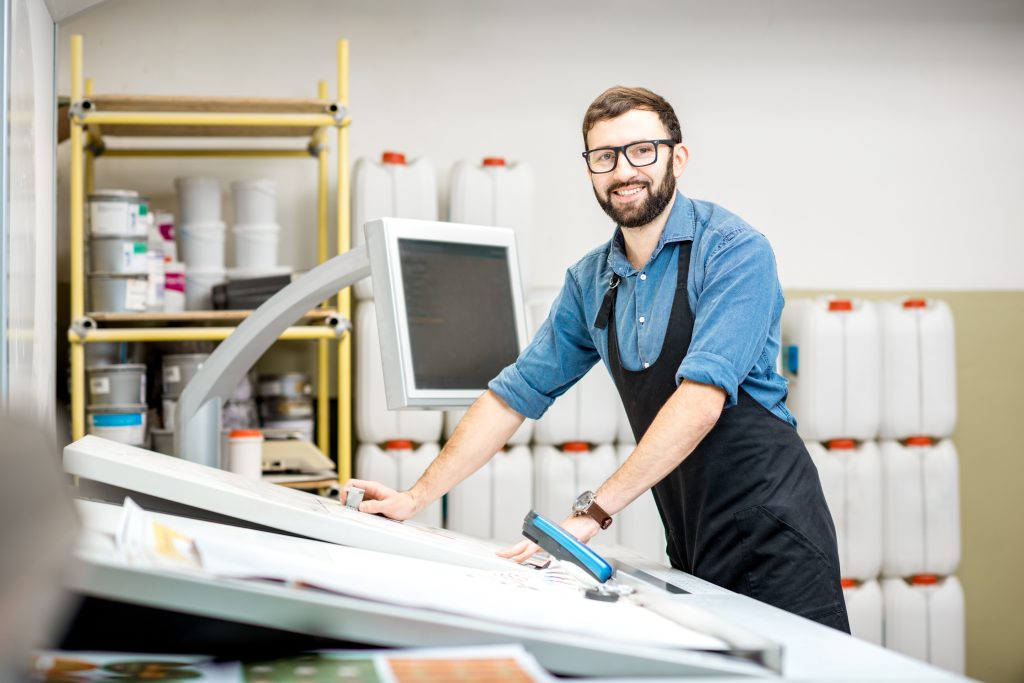
Conclusion
The Top 5 Screen Printing Inks For Vibrant And Long-lasting Prints
Types Of Screen Printing Inks
1. Water-Based Inks
2. Plastisol Ink
3. Discharge Inks
4. Solvent-Based Inks
5. Silicone Ink
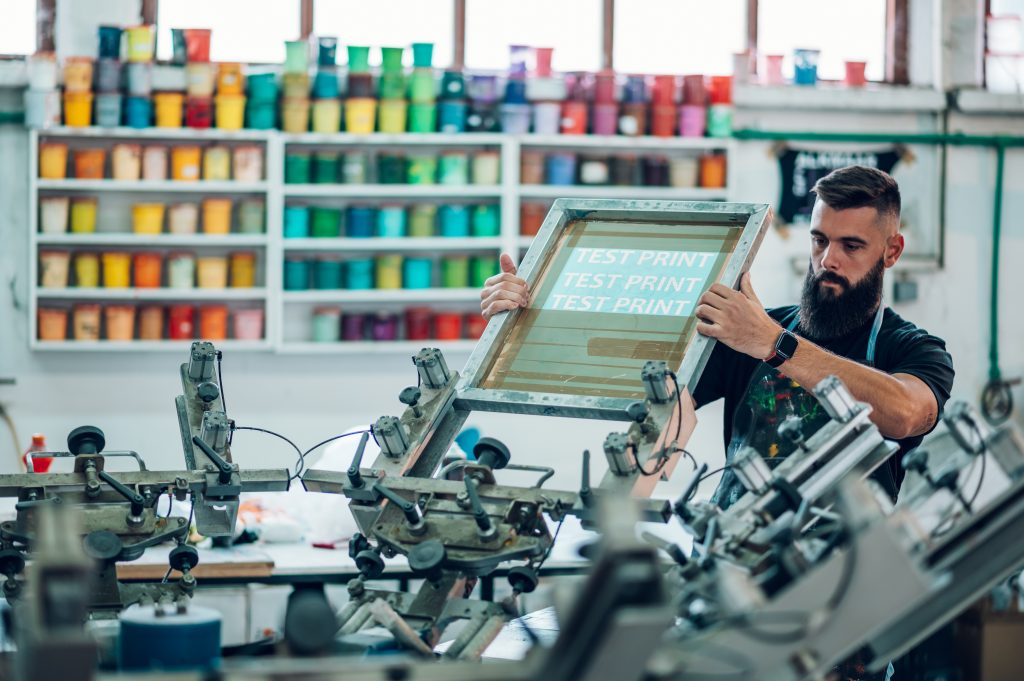
Conclusion
The Screen Printing Process
Step-By-Step Guide On How To Screen Print
Preparing The Design
Transferring The Image Onto The Printing Board
Applying A Light-Reactive Emulsion To The Mesh Screen
Exposing The Mesh Screen With Bright Light And Transparent Acetate Film
Washing Out The Original Image From The Mesh Screen
Mixing Water-Based Inks For Silk Screen Printing
Loading Ink Into A Squeegee And Applying It To The Flat Surface
Removing Excess Ink From The Printed Area With A Separate Screen And Mesh Count
Curing Or Drying The Finished Product

Conclusion
Top 5 Eco-Friendly Inks In The Market
1. UV-curable Ink
2. Algae-based Ink
3. Soy-Based Ink
4. Wate-based Ink
5. Petroleum-Based Inks

Conclusion
Top 5 Digital Printing Techniques For Stunning Results
1. Inkjet Printing
2. Laser Printing
3. Screen Prints
4. Fabric Prints
5. 3D printing
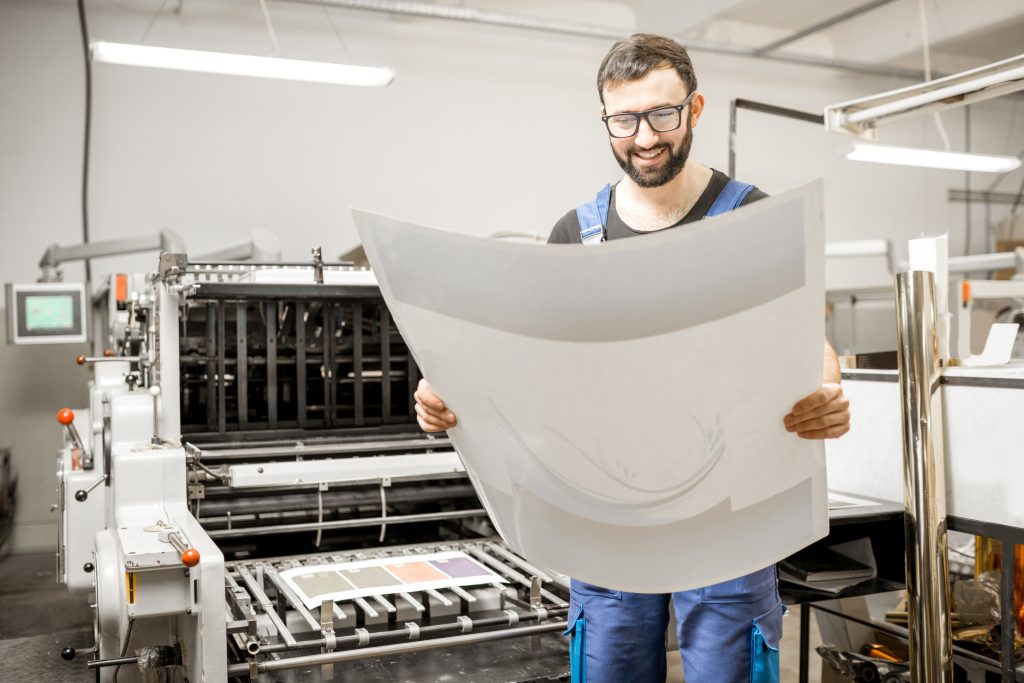
Conclusion
The Role Of Printing In Preserving History
Overview Of Johannes Gutenberg’s Role In The Print Revolution
The Transition From Manuscript To Print
Plantin-Moretus Museum & Historical Artifacts
The Catholic Church’s Influence OnTthe Transition To Print
Printing Presses And Movable Type
Overview Of Woodblock Printing And Metal Type
Benjamin Franklin’s Role In The Development Of Movable Type And Printing Presses
Huge Demand For Printed Materials During The 15th And 16th Centuries
National Identities Forming During This Time
Age Of Print: 18th Century Print Culture & Rise Of Princeton University Press
Preservation Of History Through Print Media
Benefits Of Print Archives For Historical Research & Education Purposes
Universal Accessibility To Historical Information Through Printed Records
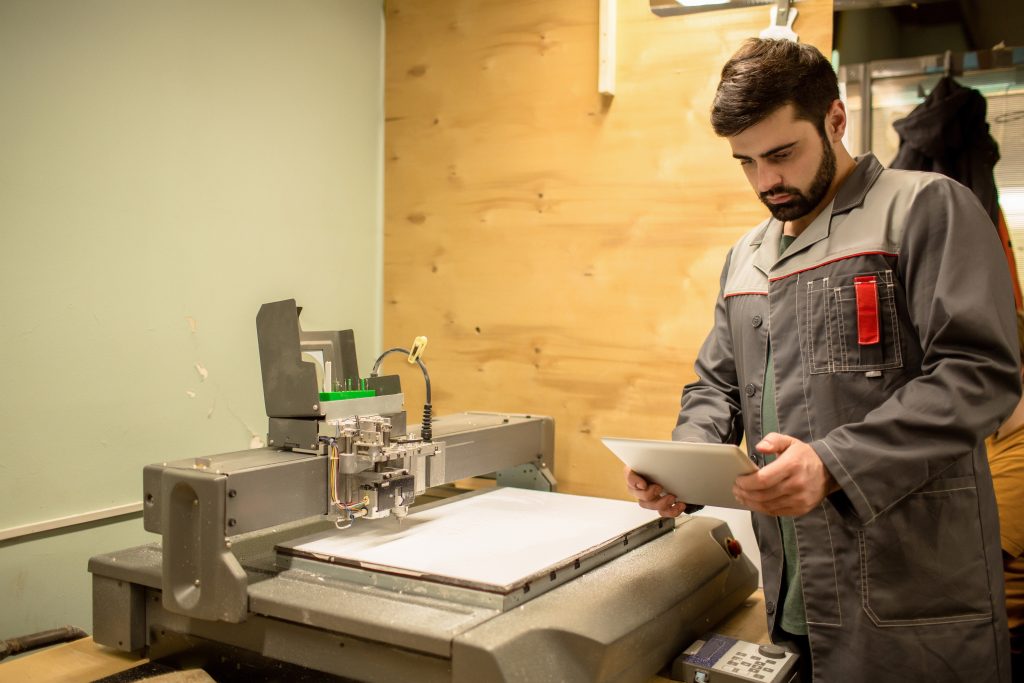
Conclusion
The Aesthetics Of Printing: Beauty In The Printed Form
20th Century Art Form: Print Beauty Magazines
Emotional Responses To Printed Beauty
Aesthetic Preference In Different Cultures And Eras
Representations of Beauty by Contemporary Artists
Understanding Different Forms of Print Beauty
The Impact Of Printing On Beauty
How Print Media Influences Society’s Perception Of Beauty
Japanese Aesthetics And Their Influence On Print Beauty

Conclusion
Would you like to explore the latest developments in digital printing techniques beyond 2023?

Varial printing as a tool
Direct to Garment Printing Technology
The Importance of Ink in the Printing Industry

Have you ever stopped to consider how important ink is in the printing industry? Inks are a key component of the printing process, and their quality can make or break a print job. From selecting the right ink to understanding how it interacts with paper, there are many factors that play into using ink successfully. Let’s take a look at why ink is so important in the printing industry.
The Role of Ink in Printing
Ink plays an essential role in the printing process, as it needs to interact properly with paper and other materials used for printing. Ink is applied to the surface of paper through a variety of methods including letterpress, offset lithography, digital printing and more. Quality ink helps create vibrant colors and sharp images that will last long after the piece has been printed.The Different Types of Inks
There are several different types of inks used in various applications throughout the printing industry. For example, UV-curable inks are often used for outdoor signage because they are more resistant to fading from sunlight exposure than traditional solvent-based inks. Water-based inks are used for most forms of indoor printing, such as magazines and posters, because they produce less odor during production. Solvent-based inks are also popular for indoor signs and banners due to their bright colors and durability when exposed to water or other liquids. No matter what type of application you’re looking for, there’s likely an ink that’s perfect for your project.
In conclusion, ink plays an important role in the success of any print job. Quality ink produces vibrant colors that will stand out on any page or sign while also being durable enough to last well beyond its initial use. By taking the time to research different types of ink and understand how they interact with paper and other materials, you can ensure that your next print job will be successful! By understanding this importance behind choosing quality ink, printers can guarantee excellent results each time they go to print something!An Introduction to Screen Printing
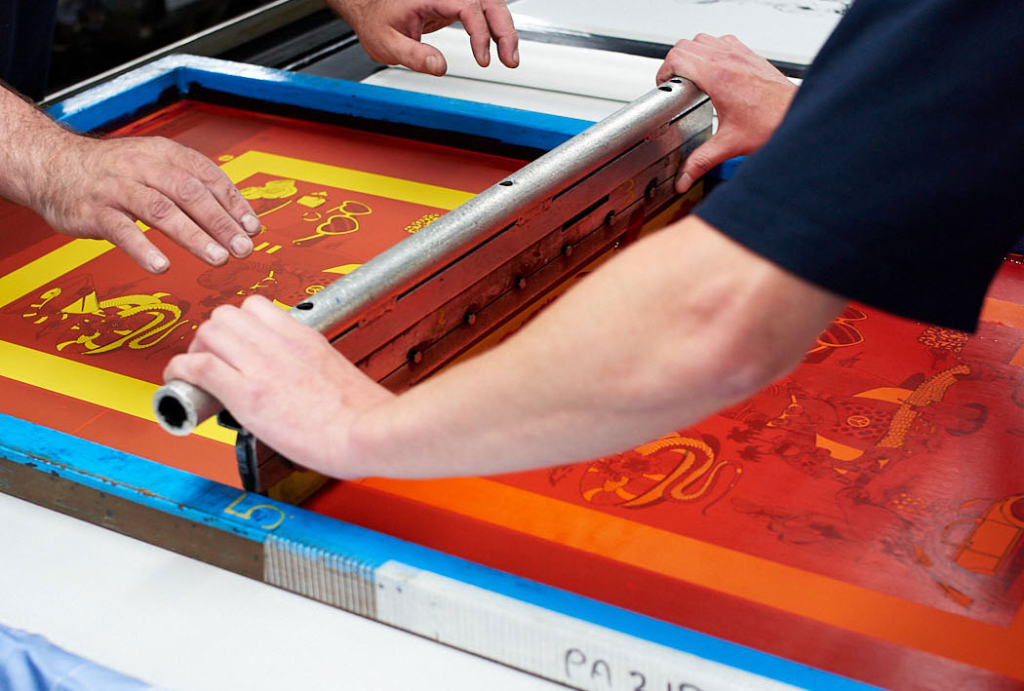
What is Screen Printing?
Why Use Screen Printing?




